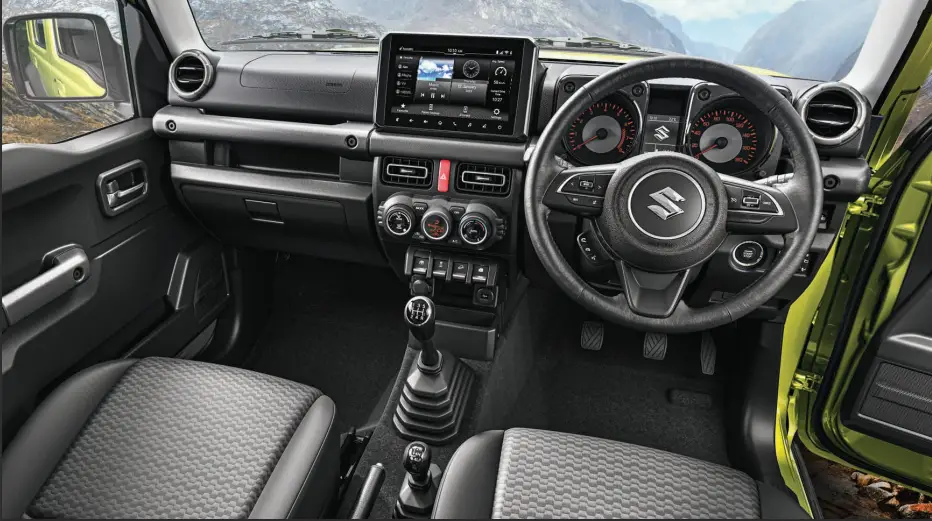
To understand whether the Maruti Suzuki Jimny is genuinely overpriced or not, let’s delve deeper into the vehicle’s characteristics and compare it with its closest competitor Thar vs Jimny Which is Better.
Outrage Over Maruti Suzuki Jimny’s Price
- People were assuming that the Maruti Suzuki Jimny would be priced according to its size, just like most vehicles. However, the ex-showroom price of the Jimny started from INR 12,74,000 to 13,94,000, which created chaos on every social media platform. People were sharing their feelings, expressing that the vehicle was highly overpriced, leading to canceled pre-bookings.
- On Reddit, a user shared that they canceled their pre-booking of the Maruti Suzuki Jimny and asked if others had done the same. Many people replied, confirming that they too had canceled their pre-bookings. Another user mentioned that they initially pre-booked the Jimny but later canceled it to purchase the Skoda Kushaq.
- A tweet on Twitter requested Maruti Suzuki to publish the number of pre-bookings that had been canceled. While there was no official data on the number of cancellations or new pre-bookings, it was evident that many people felt the vehicle was overpriced for the majority of buyers, including auto leaders.
- One of the major reasons behind this perception was the comparison with the Mahindra Thar. The 4×2 variant of Mahindra Thar was priced lower than the Maruti Suzuki Jimny, and some variants of Thar were only slightly more expensive. This led to the belief that the Thar offered better value for money compared to the Jimny.

Thar vs Jimny Key Specifications:
| Features | Maruti Suzuki Jimny | Mahindra Thar |
|---|---|---|
| Price Range | INR 12,74,000 to 13,94,000 | INR 10.5 Lakh onwards (ex-showroom) |
| Engine | 1.5-liter K15B petrol engine | 2.0-liter Mstallion petrol engine / 2.2-liter diesel |
| Power Output (HP) | 103 HP | Petrol: 150 HP / Diesel: 130 HP |
| Torque (NM) | 134 NM | Petrol: 320 NM / Diesel: 300 NM |
| Mileage (KMPL) | 16 KMPL | Petrol: 12 KMPL / Diesel: 15 KMPL |
| Boot Space | 219 liters | Minimal boot space |
| Water Wading Capacity | 300 MM | 650 MM |
| Off-Roading Capabilities | Excellent | Highly Capable |
| Road Presence | Small size, less road presence | Impressive road presence |
| Suspension Setup | Rigid axle at front and rear | Independent suspensions at the front |
| Seating Capacity | Four-seater | Four-seater |
| Width | 1645 MM | 1855 MM |
| Height | 1720 MM | 1844 MM |
Thar vs Jimny Which is Better :-
Size Matters:
The size of the Maruti Suzuki Jimny was a significant factor contributing to its perceived overpricing. While it was an excellent off-roading machine due to its small size and low weight, it lacked the road presence that many SUV buyers in India sought. This was a crucial aspect for buyers looking for a lifestyle vehicle that could be used daily. The width and height of the Jimny were considerably smaller than many other conventional off-roaders, making it look less attractive and practical.
Engine Performance:
The Maruti Suzuki Jimny was equipped with a 1.5-liter K15B engine, which was reliable and had a low NVH level. However, its power output of 103 HP and torque of 134 NM were not as high as some other off-roaders in the market, including the Mahindra Thar. The Thar’s petrol TGDI engine, based on the TGDI technology, generated a torque of 300 NM at a lower RPM, providing more substantial torque for climbing steep slopes and crossing challenging terrains.
Suspension Setup:
The Jimny’s suspension setup with rigid axles at both the front and rear made it perform well in off-roading but less comfortable on city roads. The fixed axle at the front affected the steering feel, giving it a somewhat strange experience. Other ladder frame chassis-based vehicles, like the Mahindra Thar, offered independent suspensions at the front, providing a more comfortable ride on city roads.
Water Wading Capacity:
Despite being an off-roader, the Maruti Suzuki Jimny’s water-wading capacity was only 300 MM, which was lower than many other competitors. For instance, the Mahindra Thar had a water-wading capacity of 650 MM, making it more suitable for flooded city conditions.



Maruti Suzuki Jimny interior Vs Mahindra Thar-interior
In conclusion, Thar vs Jimny Which is Better: the Maruti Suzuki Jimny was a capable off-roading machine with an excellent mileage and decent boot space. It provided a good road presence and would likely perform well in the global NCAP due to its better-built quality. However, it was perceived as overpriced by some due to its small size, lower torque, and rigid axle suspension setup. For true off-roading enthusiasts seeking higher torque and comfortable city driving, the Mahindra Thar offered a more practical and attractive option.
FAQs
1. Is the Maruti Suzuki Jimny good for off-roading?
Yes, the Maruti Suzuki Jimny is an excellent off-roading vehicle, thanks to its small size, low weight, ladder frame chassis, and proper transfer case for both 4×4 High and 4×4 Low.
2. Does the Jimny come with a diesel engine?
No, the Maruti Suzuki Jimny is available with a 1.5-liter K15B petrol engine.
3. Can the Jimny accommodate five passengers?
No, the rear seat of the Maruti Suzuki Jimny can only accommodate two passengers, making it a four-seater car.
4. What is the water-wading capacity of the Jimny?
The water-wading capacity of the Maruti Suzuki Jimny is 300 MM, which is relatively low compared to some other off-roaders in the market.
5. Is the Mahindra Thar a better value for money than the Jimny?
For some buyers, the Mahindra Thar offers better value for money due to its competitive pricing and additional features, making it a more practical choice for daily use and off-roading enthusiasts.






